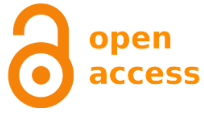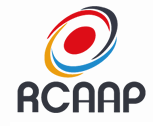Achados histopatológicos e marcação imuno-histoquímica da infecção por Neospora caninum em placentas de animais destinados ao abate
DOI:
https://doi.org/10.5433/1679-0359.2018v39n5p2287Palavras-chave:
Abatedouro, Histopatológico, Imuno-histoquímica, Neosporose, Placenta, Vacas.Resumo
A neosporose bovina é uma doença parasitária causada pelo protozoário Neospora caninum, que é um dos principais patógenos causadores de aborto em bovinos no mundo. É responsável por grandes prejuízos nos rebanhos de leite e de corte, principalmente no que se refere aos gastos associados à diminuição da produtividade e aumento do descarte. No estado do Maranhão, a ocorrência deste parasito já foi confirmada em rebanhos de bovinos de leite de três microrregiões que compõem a bacia leiteira do estado e em pequenos ruminantes dos municípios de Amarante do Maranhão e Buritirana. Justificando desta forma a importância de determinar a presença de N. caninum nos bovinos abatidos nos matadouros da Ilha de São Luís, para auxiliar no controle do ciclo parasitário no sistema de produção de bovinos na região em estudo e a importância do seu diagnóstico. O objetivo da pesquisa foi realizar a caracterização histopatológica e imuno-histoquímica de placentas bovinas infectadas por N. caninum coletadas em matadouro. Foram selecionadas ao acaso 16 amostras de placenta de vacas, provenientes de abatedouros do município de São Luís para análise histológica e imuno-histoquímica. Os resultados evidenciaram que 31% das placentas apresentaram alterações histopatológicas, tais como: processo inflamatório, edema, hemorragia e presença de hemossiderina. Todas as lâminas com alterações histopatológicas apresentaram imunomarcação para N. caninum.Downloads
Downloads
Publicado
Como Citar
Edição
Seção
Licença
Copyright (c) 2018 Semina: Ciências Agrárias

Este trabalho está licenciado sob uma licença Creative Commons Attribution-NonCommercial 4.0 International License.
Semina: Ciências Agrárias adota para suas publicações a licença CC-BY-NC, sendo os direitos autorais do autor, em casos de republicação recomendamos aos autores a indicação de primeira publicação nesta revista.
Esta licença permite copiar e redistribuir o material em qualquer meio ou formato, remixar, transformar e desenvolver o material, desde que não seja para fins comerciais. E deve-se atribuir o devido crédito ao criador.
As opiniões emitidas pelos autores dos artigos são de sua exclusiva responsabilidade.
A revista se reserva o direito de efetuar, nos originais, alterações de ordem normativa, ortográfica e gramatical, com vistas a manter o padrão culto da língua e a credibilidade do veículo. Respeitará, no entanto, o estilo de escrever dos autores. Alterações, correções ou sugestões de ordem conceitual serão encaminhadas aos autores, quando necessário.
















